Egan Irish Harps: Neoclassical Art Meets Traditional Music
The harp has been the symbol of Ireland since the Middle Ages, not quite as long as the shamrock and St. Patrick, but long before its appearance on the label of that other Irish icon, Guinness stout. Yet it may never have become the national instrument played in Ireland today had it not been for the ingenuity of an early 19th-century Dublin harp maker named John Egan.
Unlike concert harps, Egan’s new-style harps were small and portable. They retained the characteristic bowed pillar of medieval Gaelic wire harps on which they were modeled, but used gut strings and modern mechanisms to change keys. Recognizing the excellence of Egan harps, George IV granted the maker a royal warrant. Although patronized by royalty, Egan’s Portable Irish Harp, painted green with golden shamrocks, was also viewed as an emblem of Irish nationalist pride in post-Union Ireland.
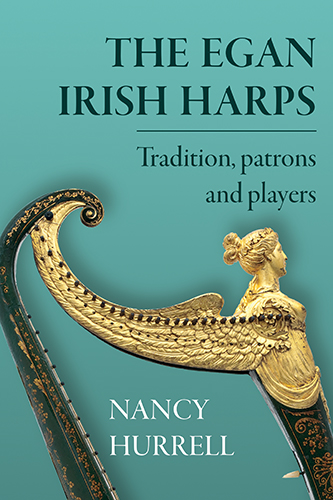
The complex story of how an innovative musical instrument and the music performed on it responded to the culture of its time is ably told by Boston-based harpist and harp historian Nancy Hurrell in her new book, The Egan Irish Harps: Tradition, Patrons and Players.
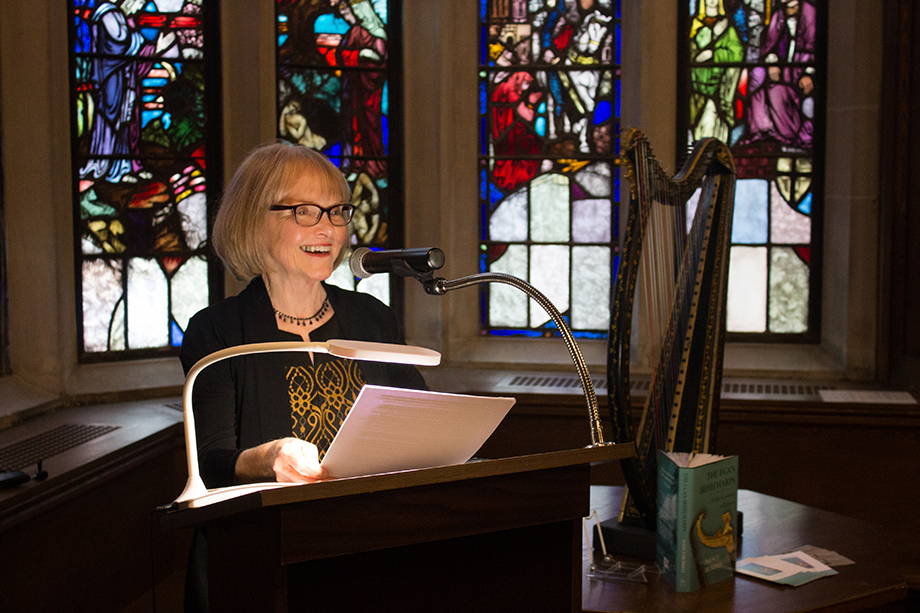
Burns Library hosted a launch on May 17 to celebrate the book’s release and Hurrell’s long association with the BC Libraries, which helped to support the volume’s publication with Dublin’s prestigious Four Courts Press through the Mary Stack McNiff endowment. The event was co-sponsored by the Irish Georgian Society, a charitable membership organization whose purpose is to promote awareness and protection of Ireland’s architectural heritage and decorative arts. Some 70 people attended, coming from as far as Rhode Island, Connecticut, Maine, and even Chicago. Following an opening reception in the Burns Library Irish Room, Hurrell presented an informative slide lecture on Egan and his innovations in harp design, and then performed several short pieces on her own Egan harp, transporting the audience sonically into the world of the patrons and players of the very instruments that her volume so vividly portrays.
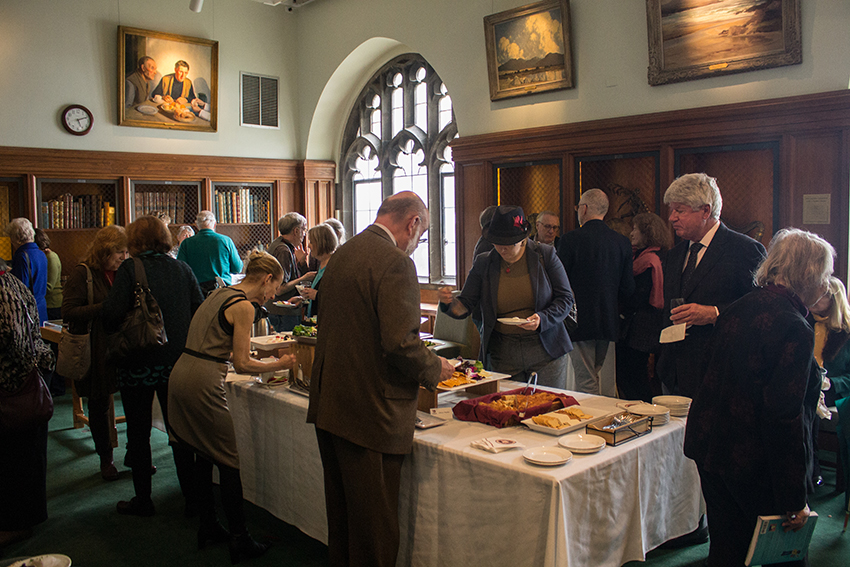
Hurrell’s connection with Boston College dates back to 2002, when she met Irish music librarian Elizabeth Sweeney while visiting Burns Library to examine a harp crafted by Egan that was on loan from a noted collector, Frederick Selch. A few months later, Hurrell facilitated the donation and conservation of an Egan harp from artist and soprano Heidi Nitze. Selch’s widow decided to permanently gift her husband’s harp to Burns Library the following year. Both harps are displayed in the Irish Room, together with a third harp played by 20th-century Irish soprano and harpist Mary O’Hara, who donated her archives to the library in 2009. Hurrell performed on O’Hara’s harp in conjunction with the 2010 Burns Library exhibit, “Dear Harp of My Country.” Over the years, she has advised on other exhibits, presented to classes, and fielded harp conservation questions.
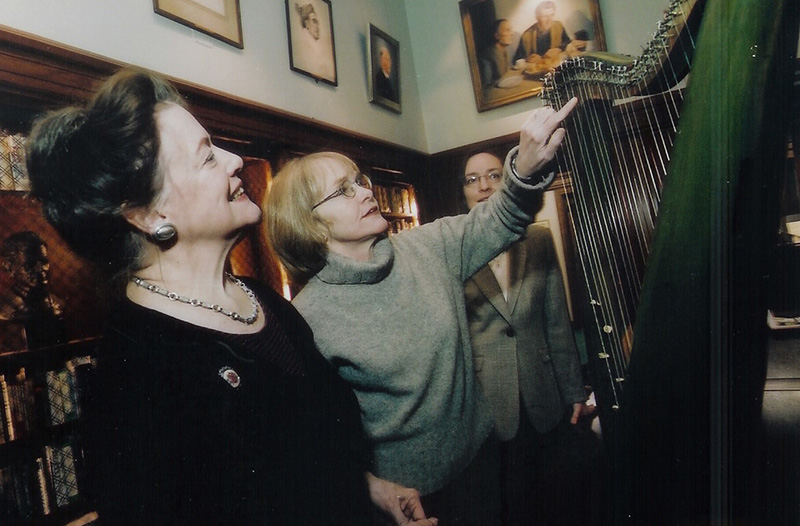
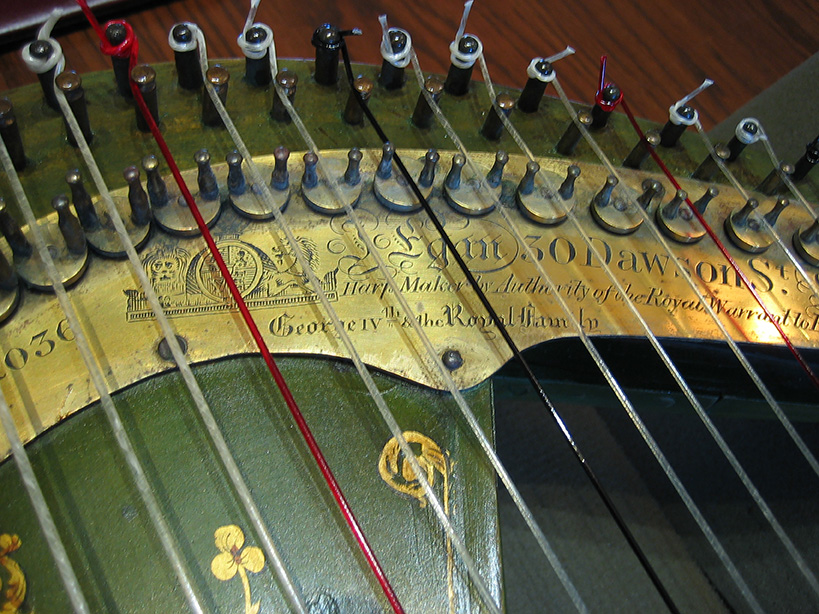
A well-known harpist, Hurrell has published harp books, articles and CDs, including the first full-length recordings on original Egan harps. She is a harp consultant at the Museum of Fine Arts, presenting gallery talks and recording sound files of harps in the museum’s collection. She is also a member of the harp faculty at the Boston Conservatory, and performs and teaches at conferences across the US, Canada, Britain, and Ireland.
In April, Hurrell conducted a book tour that included launch events at the Irish Traditional Music Archive in Dublin and the Royal Academy of Music in London. At the former, Siobhán Armstrong, director of Historical Harp Society of Ireland, commented in her introductory remarks: “Nancy Hurrell is an all-too-rare researcher in that her work is practice-led. The author doesn’t just write about harp history; she plays many kinds of historical harps, seemingly equally at home on medieval harps, chromatic baroque harps, single- and double-action pedal harps and modern Irish harps. Hurrell is also the first harpist to make recordings on original Egan harps, so her contribution to the field is a delightful binary: as researcher and also as a performer, each strand of activity informing the other.”